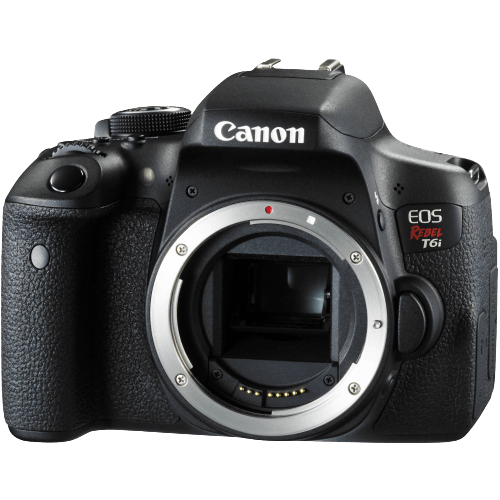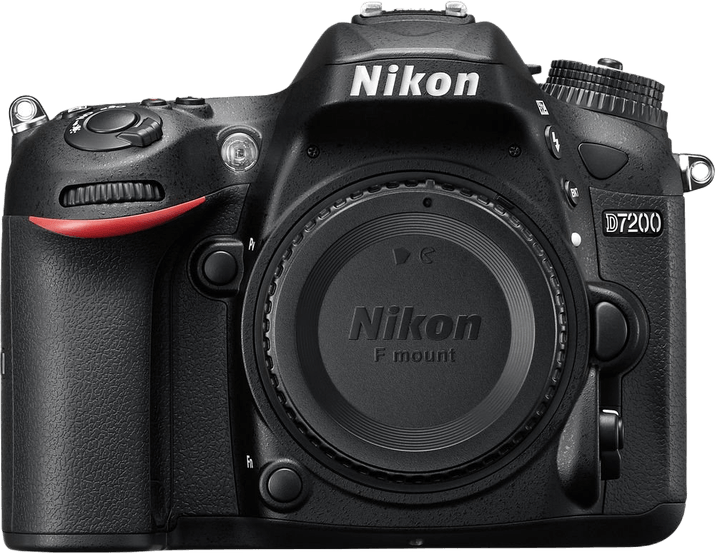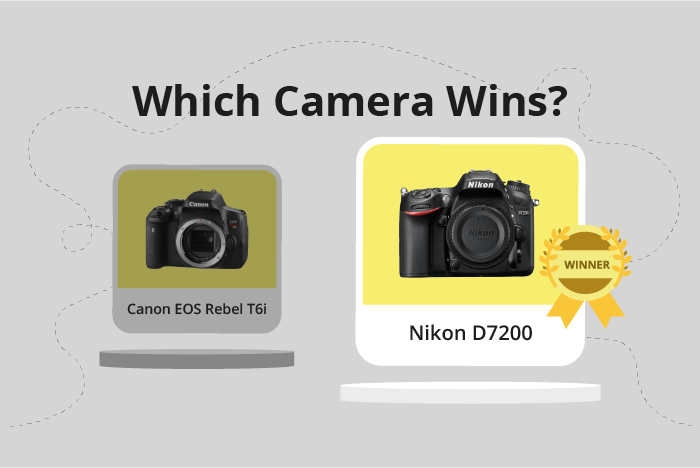Canon EOS Rebel T6i / 750D vs Nikon D7200 Comparison
Canon EOS Rebel T6i / 750D

Nikon D7200

The Nikon D7200 outperforms the Canon EOS Rebel T6i / 750D with a score of 68/100 compared to 56/100. Both cameras are DSLR models released in 2015, with the Canon T6i priced at $750 and the Nikon D7200 at $1200. They share similar dimensions, with the T6i measuring 132 x 101 x 78mm and the D7200 at 136 x 107 x 76mm. However, the Nikon D7200 is heavier at 765g, while the Canon T6i weighs 555g.
The Nikon D7200’s higher score indicates that it offers better performance and features compared to the Canon T6i. On the other hand, the Canon T6i has the advantage of being lighter and more affordable.
Taking these factors into consideration, the Nikon D7200 is the superior choice for those who prioritize performance and features, while the Canon T6i is a budget-friendly option for those who value weight and affordability.
Canon EOS Rebel T6i / 750D vs Nikon D7200 Overview and Optics
The Nikon D7200 outperforms the Canon EOS Rebel T6i / 750D in optics with a score of 71/100, compared to the Canon’s 59/100. Both cameras share several specifications, including a 24.2-megapixel CMOS sensor, APS-C sensor size, and the absence of image stabilization. However, the differences in scores show that the Nikon D7200 has superior optics performance.
The Nikon D7200’s higher score is due to its faster shooting speed of 6 frames per second, compared to the Canon T6i’s 5 frames per second. Additionally, the Nikon D7200 has a more advanced Expeed 4 processor, while the Canon T6i uses a Digic 6 processor. The DXOMARK sensor score for the Nikon D7200 is significantly higher at 87, compared to the Canon T6i’s score of 71. The Nikon D7200 also uses the Nikon F DX lens mount, which offers a wider range of lens options than the Canon EF-S lens mount on the T6i.
Although the Canon T6i has a lower score, it still offers good optics performance. The 24.2-megapixel CMOS sensor provides high-resolution images and the Digic 6 processor ensures fast image processing. The Canon EF-S lens mount also offers a decent selection of lenses for various photography needs.
Considering the differences in optics performance, the Nikon D7200 is the superior choice with its faster shooting speed, advanced processor, higher DXOMARK sensor score, and wider lens compatibility. The Canon T6i, while not as high-scoring, still provides satisfactory optics performance for various photography needs.
Canon EOS Rebel T6i / 750D vs Nikon D7200 Video Performance
The Nikon D7200 emerges as the winner in video capabilities with a score of 70/100, while the Canon EOS Rebel T6i / 750D trails behind with a score of 43/100. Both cameras share some common specifications, such as a maximum video resolution of Full HD (1920 x 1080). However, the Nikon D7200 surpasses the Canon T6i in terms of video performance due to its superior features.
The Nikon D7200’s advantage lies in its maximum video frame rate of 60fps, which is double the Canon T6i’s 30fps. This higher frame rate allows the D7200 to capture smoother and more detailed footage, especially in fast-paced situations. Additionally, the D7200 has a built-in time-lapse functionality, which the Canon T6i lacks. This feature enables users to create stunning time-lapse videos without the need for additional software or equipment.
On the other hand, the Canon T6i does not offer any significant advantages in video capabilities over the Nikon D7200. Both cameras have the same maximum video resolution and dimensions, but the T6i falls short in frame rate and time-lapse functionality.
Taking these factors into account, the Nikon D7200 clearly outperforms the Canon EOS Rebel T6i / 750D in video capabilities. Its higher frame rate and built-in time-lapse feature make it a more versatile and capable camera for capturing high-quality video footage. Meanwhile, the Canon T6i does not offer any distinct advantages in this category and is best suited for photographers who prioritize still images over video performance.
Canon EOS Rebel T6i / 750D vs Nikon D7200 Features and Benefits
The Nikon D7200 emerges as the winner in features with a score of 59/100, while the Canon EOS Rebel T6i / 750D trails slightly behind with a score of 57/100. Both cameras share some common specifications, including a lack of GPS and Bluetooth, as well as the presence of WiFi connectivity.
The Nikon D7200 has a larger screen size of 3.2 inches compared to the Canon T6i’s 3-inch screen, allowing for easier image viewing and menu navigation. Additionally, the D7200’s screen resolution of 1,228,800 dots surpasses the T6i’s 1,040,000 dots, providing crisper and more detailed image playback.
On the other hand, the Canon T6i boasts a touchscreen and a flip screen, features absent in the Nikon D7200. The touchscreen enables more intuitive control and faster adjustments, while the flip screen allows for more flexible shooting angles and better self-portraits.
Despite the Nikon D7200’s victory in screen size and resolution, the Canon T6i’s touchscreen and flip screen capabilities may be more appealing to some users, depending on their preferences and shooting needs. Ultimately, the choice between these two cameras comes down to personal priorities, with the Nikon D7200 offering a higher resolution and larger screen, and the Canon T6i providing the convenience of a touchscreen and flip screen.
Canon EOS Rebel T6i / 750D vs Nikon D7200 Storage and Battery
The Nikon D7200 outperforms the Canon EOS Rebel T6i / 750D in storage and battery with a score of 79/100, compared to the Canon’s 24/100. Both cameras accept SD, SDHC, and SDXC memory cards, with the Nikon D7200 being UHS-I compatible. However, the Nikon D7200 has two memory card slots, while the Canon T6i / 750D has only one.
In terms of battery life, the Nikon D7200 is superior with 1110 shots per charge, versus the Canon T6i / 750D’s 440 shots. The Nikon uses an EN-EL15 battery, while the Canon uses an LP-E17 battery. Neither camera offers USB charging.
Although the Canon T6i / 750D falls short in storage and battery performance, it still provides decent battery life and memory card compatibility for casual users. However, for those who require longer shooting sessions and more storage flexibility, the Nikon D7200 is the clear winner in this comparison.
Alternatives to the Canon EOS Rebel T6i / 750D and Nikon D7200
Are you still undecided about which camera is right for you? Have a look at these popular comparisons that feature the Canon EOS Rebel T6i / 750D or the Nikon D7200:

